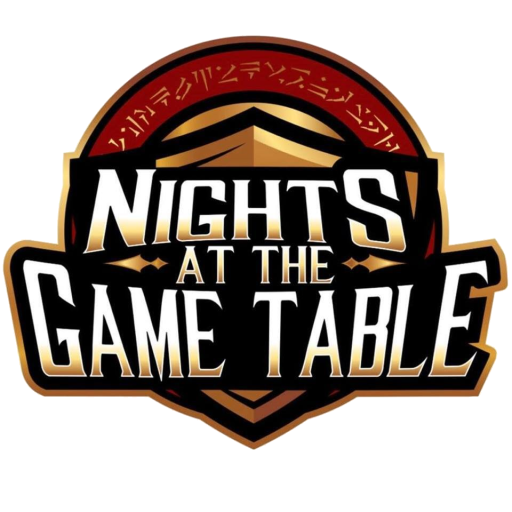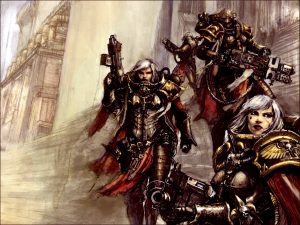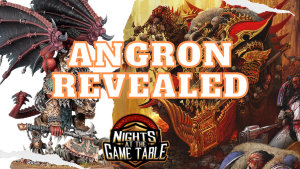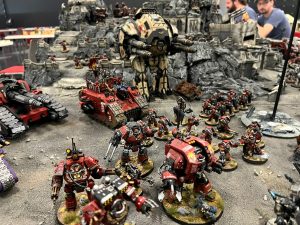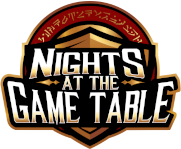Last week we continued our current mini-series, wherein we are looking at playing into our opponents’ weaknesses based on their preferred playstyle. To begin, if you haven’t already, read back to the first article Mind Games article, where we broke down the four playstyles and some of their characteristics.
In this series, we are looking at some on the board strategies to counter various playstyles. This week we’re going to close out the series by looking at the Reactive-Tight Archon, how to identify them, counter their strengths, and exploit their weaknesses.

Identifying an Archon:
As we covered previously, an Archon is a player who favors a reactive-tight style. The elements of a playstyle can be sometimes correlated to a person’s personality outside the game, so we can look for some indicators before the models even hit the table that our opponent may lean toward the Archon playstyle.
 Identifying our opponent’s tendencies early is helpful not only because it gives us more time to implement our counter stratagems, but it also can help us identify early on when someone may be trying to play counter to their natural playstyle and may be more prone to going “on tilt,” playing their aggressive-loose list tightly and reactively when put under pressure.
Identifying our opponent’s tendencies early is helpful not only because it gives us more time to implement our counter stratagems, but it also can help us identify early on when someone may be trying to play counter to their natural playstyle and may be more prone to going “on tilt,” playing their aggressive-loose list tightly and reactively when put under pressure.
We also want to assess the playstyle that best fits our opponent’s list and if there seems to be a discrepancy between that and their natural playstyle, we may be able to gain an advantage by pushing the scenario on the table to skew further away from either their own natural playstyle or the most efficient playstyle for the list.
That is, an Archon who is running a more Tank-commander-style list may begin holding back and waiting for their opponent to take the first move, rather than strike decisively.
Let us start our identification of an Archon by looking at some potential personality traits:
- Passive, quiet personality: this player is unlikely to lead a conversation and instead allow someone else to choose topics. They’re also likely to defer to their opponent when walking through pregame-setup, rolls, and so-on
- Organized: this player is more likely to be organized in their pregame setup; there is a system to where their gaming tools and models are placed, either on trays or in the bag.
Basically, we’re looking for someone who displays elements of a tight approach by demonstrating planning or organization, combined with elements of a reactive, passive personality by allowing others to lead conversations and early setup.
Obviously, these traits aren’t exclusive or required for someone to lean toward an Archon playstyle, simply indicators. When identifying an opponent’s playstyle and approach, it’s important to be regularly reevaluating and reassessing. A wily opponent can be aware of these very same categorizations and actively misrepresent themselves in order to give their opponents the wrong read.

Countering Archon Plays:
The Archon playstyle is built on a desire to react to their opponent and pounce on exposed weaknesses with a series of traps and counterblows. It is a precise playstyle and wants to be countering opponents moves with planned counter-attacks.
On the table, we can implement a few strategies to counter or exploit this playstyle’s passiveness and tightness through careful placement or play around objectives, setting apparent traps, and being unpredictable by being overly aggressive or overly defensive.
As we all know, objective placement or positioning around objectives is crucial to winning the game. Knowing an Archon’s tendency toward reactiveness, we can use the positioning of objectives or our positioning around objectives to force action and use it against them to win the mission. However, as a playstyle that favors pre-planning and having a script for the entire game, an Archon is unlikely to be caught wildly out of position.
If our opposing Archon list features predominantly short-ranged and combat threats, spreading objectives into corners and edges of the board can allow us to spread our opponent’s forces thin, out of position to support each other. Even in preset objective missions, we can usually still direct their reactions away from the majority of objectives by presenting overwhelming threat to areas near clustered objectives and apparent weakness near more isolated objectives.
If our opponent has a list more focused on ranged threats, this task is a little more difficult, but essentially the same; we can try to use terrain to position our high value targets in places where our opponent must place their own shooting units away from objectives in order to draw line of sight.

If objectives are placed after sides are determined, we can look to put objectives opposite of where the opponent wants to be. That is, if their offensive threats are primarily combat based, placing objectives in corners of their backfield can force a defensive posture. On the other hand, if their offense is more based on shooting, forcing them to come across the board or into positions with poor firing lanes will force a choice between game objectives and offense.
Another way of countering an Archon and their tight, reactive plays is to set apparent traps. Unlike for other playstyles, as one of the foremost playstyles in setting and executing traps, the Archon player is likely to expect and see a trap for what it is and work around it. For this reason, instead of placing obvious or hidden traps, we can instead attempt what appears to be a trap, but is actually a move out.
This is a bit more complex (and easier said than done) but essentially we set what looks to be a trap; a bait unit with other units positioned safely in position to counter anything that attacks the bait. We would expect a more aggressive player to just take the bait, but a reactive tight player is more likely to see the trap and move to counter it, either threatening the counter-attackers in turn or just moving away.
By expecting an avoidance of the trap, we can use that to position our units involved in the trap with a plan in place for when the trap is not executed. Again, easier said than done, but we can use the apparent trap to allow our bait unit to safely get into a position that required them to be exposed for a turn.

We can also counter an Archon by either overwhelming aggression, or extreme passiveness, particularly because an Archon is likely to plan for a degree of calculated aggression or reactiveness; exceeding the expected aggression or reactiveness will force our opponent to alter their plans.
An Archon player wants the action to come to them to some degree, and then react on their opponent’s choices to execute a counter-strategy that takes advantage of areas of weakness. One way to counter this is to be overwhelming aggressive in a concentrated area.
Ideally, an Archon would like to be able to pick apart our forces piecemeal; jumping on backfield units when we are aggressive and overwhelming our forward threats when we sit back. If we instead use our backfield units as a rearguard as we move up the board, keeping our forces concentrated, we make the army harder to pick apart. Moving this entire force aggressively can also overwhelm traps planned for single units or elements of our army.
The opposite of going on an all out offensive, if our Archon opponent is primarily looking to counter aggression as we move forward, we can put them off by being extremely passive ourselves and forcing them to take the first move.
This is particularly effective if we outrange the opponent, obviously, or have the tools to simply endure the limited portion of their threats they can bring from the back board edge before jumping out to win the positional game in the late turns, when their closer-ranged elements will not have enough time to reclaim control.
For some opponents, waiting them out can force them to move out and take an aggressive stance, which is more likely to be poorly directed or positioned if their gameplan primarily focuses on countering an opponent who moves forward first.
The caveat to playing passively like this is that, against a board control list with a lot of bodies, purely hanging back can simply put us into a tighter corner. As such, we should only opt for this approach if we have the tools to outrange and clear out large chunks of an opposing board control force.
So there we have some high-level tactics to employ to counter a tightly reactive Archon opponent. The earlier we can get a read on their preferred playstyle, the sooner we can implement these strategies to take advantage of their tendencies and exploit their weaknesses. Thanks for reading, and let us know what you think in the comments below.
